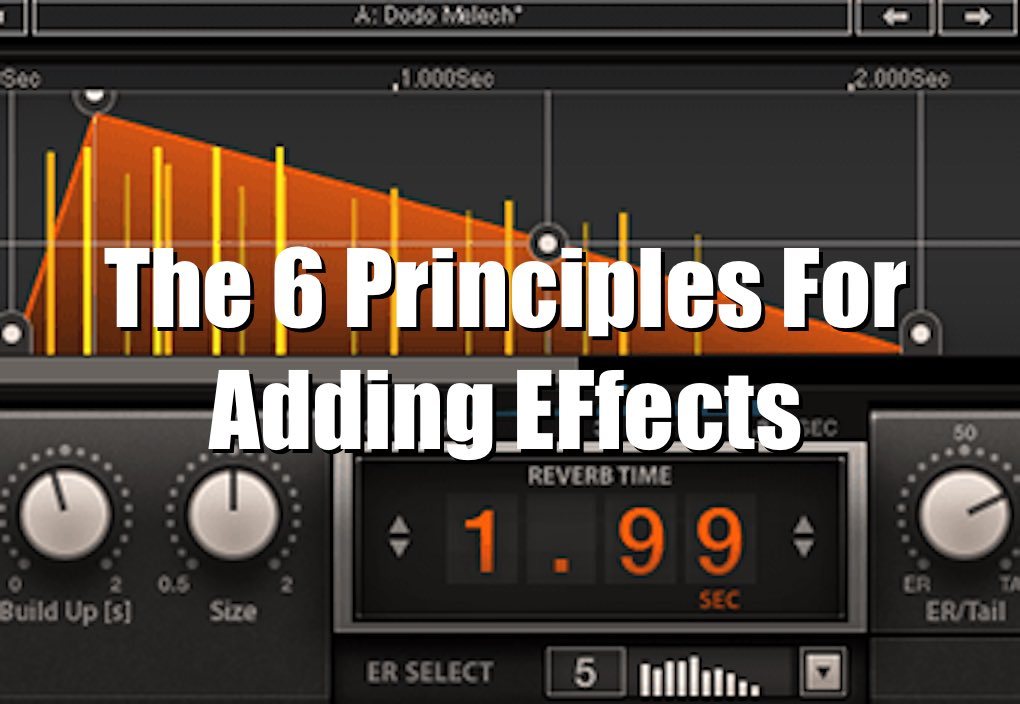- in Production by Bobby Owsinski
- |
- 1 comments
The 6 Principles For Adding Effects

A major element of a mix is dimension, which is the ambient field that the track or tracks sits in. Dimension can be captured while recording, but it’s usually created or enhanced when mixing by adding effects such as reverb, delay, or modulation. Dimension might mean re-creating an acoustic environment, but it could also mean adding width or depth to a track to try to spruce up a boring sound. There are 6 principles that offer a general guideline on how effects can be used.
Principle 1: Picture the performer in an acoustic space and then re-create that space around him.
This method usually saves time, as it’s a lot faster than simply experimenting with different effects presets until something excites you (although that method can work, too). Also, the artificially created acoustic space needn’t be a natural one. In fact, as long as it fits the music, the more creative the better.
Principle 2: Smaller reverbs or short delays make things sound bigger.
Reverbs with decays under a second (and usually much shorter than that) and delays under 100 milliseconds (again, usually a lot shorter than that) tend to make the track sound bigger rather than push it back in the mix, especially if the reverb or delay is in stereo.
Many times a reverb will be used with the decay parameter turned down as far as it will go (which may be as low as 0.1 seconds), but this setting is sometimes the most difficult for a digital reverb to reproduce, resulting in a metallic sound. If this occurs, sometimes lengthening the decay time a little or trying a different preset will result in a smoother, less tinny sound, or you can try another plugin or hardware unit that performs better under these conditions. Of the 6 principles, this one is the most overlooked.
Principle 3: Long delays, long reverb predelay, and reverb decay settings push a sound further away if the level of the effect is loud enough.
Delays and predelays (see the section later in the chapter on reverb) longer than 100 milliseconds are distinctly heard and begin to push the sound away from the listener.
The trick between something sounding big or just distant is the level of the effect. When the decay or delay is short and the level is loud, the track sounds big. When the decay or delay is long and loud, the track just sounds far away.
Principle 4: If delays are timed to the tempo of the track, they add depth without being noticeable.
Most mixers set the delay time to the tempo of the track. (See the section on delay for how to do this.) This makes the delay pulse with the music and adds a reverb type of environment to the sound. It also makes the delay seem to disappear as a discrete repeat, but it still adds a smoothing quality to the mix element.
Principle 5: If delays are not timed to the tempo of the track, they stick out.
Sometimes you want to distinctly hear a delay and the best way to do that is to make sure that the delay is not exactly timed to the track. Start by first putting the delay in time; then slowly alter the timing until the desired effect is achieved.
Principle 6: Reverbs sound smoother when timed to the tempo of the track.
Reverbs are timed to the track by triggering them off of a snare hit and adjusting the decay parameter so that the decay just dies before another snare hit. The idea is to make the decay “breathe” with the track. One way to achieve this is by making everything as big as possible at the shortest setting first, then gradually making the settings longer until it’s in time with the track.
Of course, the biggest part of adding effects to a mix is experience, but keeping these 6 principles in mind will provide a perfect place to start.
You can read more from The Mixing Engineer’s Handbook and my other books on the excerpt section of bobbyowsinski.com.

